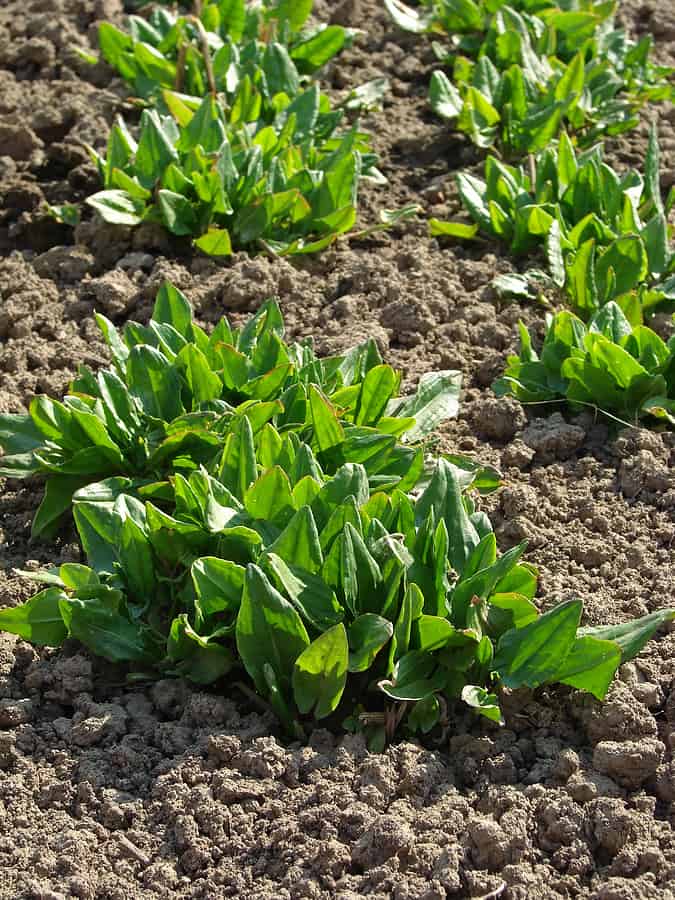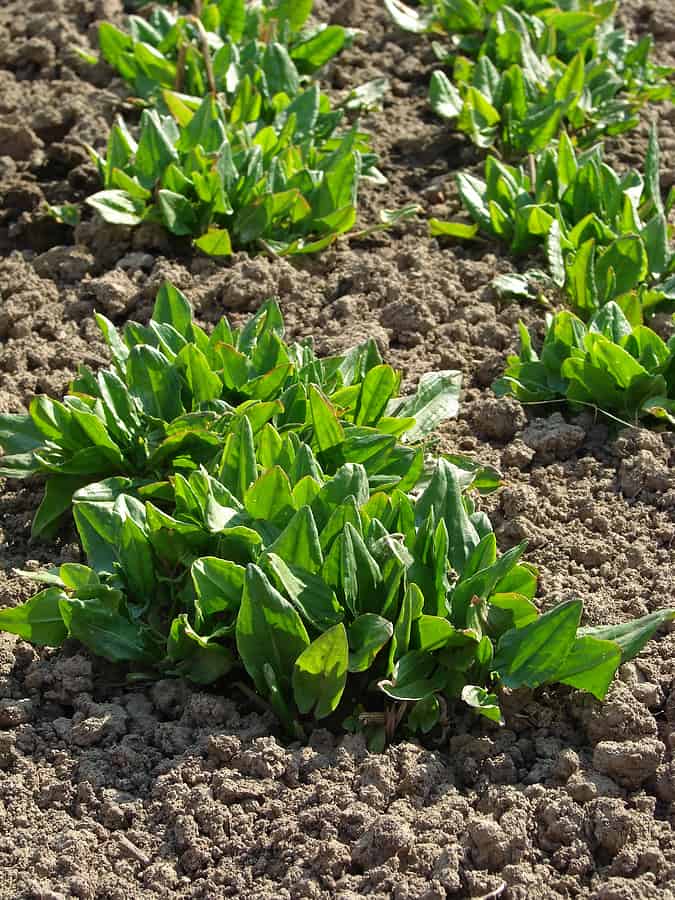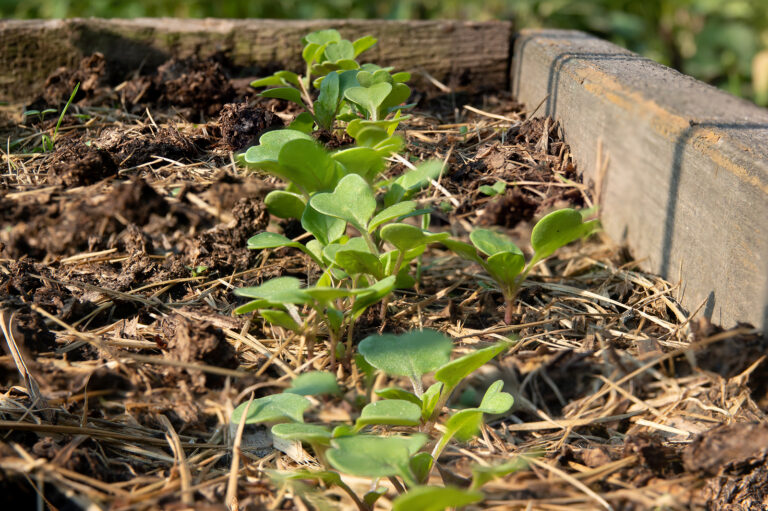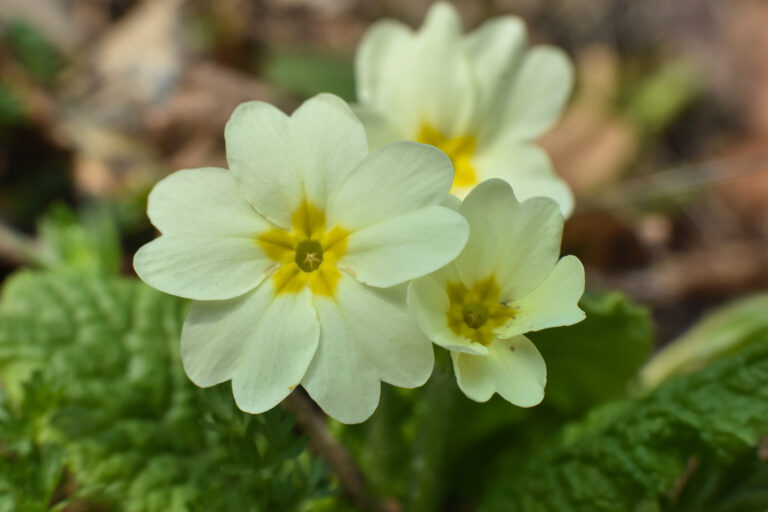How to Plant, Grow, and Harvest Sorrel
Sorrel is a cool-season perennial often grown as an annual. Sorrel is often grown from root divisions. Sorrel can be grown from seed sown in the garden as early as 2 to 3 weeks before the average last frost date in spring. Sorrel will be ready for harvest 60 days after sowing.
Plant sorrel seeds directly in the garden 2 to 4 weeks before the last frost in spring. To set out transplants start seeds indoors 4 to 5 weeks before transplanting. Set transplants in the garden 4 weeks before to 2 weeks after the last frost. Transplants will give you a head start on the season.
Sorrel is a cool-season leafy crop. It has a sharp, tangy flavor. It can be used in salads and soups and as an ingredient in sauces.
Related articles of interest:
- How to Prepare Sorrel Raw or Cooked
- How to Grow Herbs
- How to Start an Herb Garden
- Best Herbs for Container Growing
- Herbs for Cool Season Growing
- Grow 20 Herbs for Cooking

There are annual and perennial sorrel species. French sorrel (Rumex scutatus) and garden sorrel (R. acetosa) are perennials; Red-veined sorrel (R. sanguineus) is an annual.
Sorrel grows best in early spring and in fall, but sorrel is heat-resistant and will survive in hot summer regions when grown in partial shade. When grown as a perennial, sorrel should be given its own bed or spot where it can grow for several years. Perennial sorrel increases to a clump by multiplying underground.
Grow sorrel in moisture-retentive, humus-rich soil in full sun or partial shade If temperatures warm you can mulch them with aged compost to keep the plants from bolting.
Sorrel matures in about 70 days. Start to harvest outer leaves as soon as they are usable size. This cut-and-come-again method will prolong the harvest. The flavor and texture of leaves are best when leaves are still young and tender.
Here is your complete guide to growing sorrel.
Types of sorrel
Sorrel is grown for its tangy, slightly sour-tasting arrow-shaped leaves. There are five types of sorrels to choose from garden sorrel, French sorrel, herb patience or spinach dock, spinach rhubarb, and common or sheep sorrel. All are good for eating.
- Garden sorrel (Rumex acestosa) grows about three feet tall and produces leaves that can be used fresh in salads.
- French sorrel (R. scutatus) grows 6 to 12 inches (15-30cm) tall and has fiddle-shaped leaves used in salads.
- Herb patience or spinach dock (R. patientia) grows to four feet tall with leaves that can be used either fresh or cooked.
- Spinach rhubarb (R. abyssinicus) grows up to 8 feet (2.4m) tall; the leaves can be used like spinach and the stalks like rhubarb.
- Common or sheep sorrel (R. acetosella) is a wild plant whose leaves can be eaten raw in salads or cooked like spinach.
- Red-veined sorrel (R. sanguineus)
Yield. Plant 2 or 3 sorrel plants per household member. Sorrel is used as a salad green accent.

Where to plant sorrel
- Plant sorrel in full sun.
- Sorrel grows best in well-worked, well-drained soil rich in organic material.
- Add aged compost to planting beds before planting.
- Sorrel prefers a soil pH of 5.5 to 6.8.
When to plant sorrel
- Sorrels are very hardy. Sow sorrel in the garden as early as 2 to 3 weeks before the average date of the last frost in spring.
- In zones 5 and warmer, sorrel will grow as a perennial.
- Divide plants to renew them every 3 to 4 years.
Sorrel planting dates
(These dates are for the Northern Hemisphere)
| Average date of the last frost | Planting dates |
| Jan. 30 | Jan. 1-Mar. 1 |
| Feb. 8 | Jan. 1-Mar. 1 |
| Feb. 18 | Jan. 15-Mar. 1 |
| Feb. 28 | Feb. 1-Mar. 10 |
| Mar. 10 | Feb. 10-Mar. 15 |
| Mar. 20 | Feb. 10-Mar. 20 |
| Mar. 30 | Feb. 20-Apr. 1 |
| Apr. 10 | Mar. 1-Apr. 1 |
| Apr. 20 | Mar. 15-Apr. 15 |
| Apr. 30 | Apr. 1-May 1 |
| May 10 | Apr. 10-May 1 |
| May 20 | Apr. 20-May 10 |
| May 30 | May 1-June 1 |
| June 10 | May 10-June 1 |
Sorrel planting details
- Sowing depth: ¼ inch (.6 cm)
- Space between plants after thinning: 8 to 18 inches (20-45cm)
- Days to sprout: 5-7
- Days to harvest: 70 days or as soon as the leaves are edible in about 40 days
- Storage period: 1-2 weeks
- Seeds per 100-row feet: ¼ ounce (7 grams)
- Yield per 100-row feet: 100 heads
- Suggested varieties: Green, Red Veined

Sorrel planting and spacing
- Sorrel Sow sorrel seed ½ inch (12mm) deep and 2 to 3 inches (2.5-7cm) apart.
- Thin successful seedlings from 12 to 18 inches (30-45cm) apart when plants are 6 to 8 weeks old.
- Space rows 18 to 24 inches (45-61cm) apart.
- Divide established sorrel in spring. Choose male plants–without flowers–for divisions to avoid reseeding.
Sorrel companion plants
- Grow sorrel with strawberries but not tall plants such as corn or pole beans.
Container growing sorrel
- Sorrel grows well in a 6-inch (15cm) pot. In larger containers, plant sorrel on 8-inch (20cm) centers.

Watering and feeding sorrel
- Sorrel should be kept evenly moist.
- Add aged compost to planting beds before planting and again at midseason.
Sorrell care and maintenance
- Sorrel is not demanding; it requires little extra care.
- Keep sorrel planting beds weed-free.
Sorrel pests and diseases
- Aphids can attack sorrel. Control them by pinching out infested areas or hosing the aphids off the plants.
- Sorrel has no serious disease problems.
How to harvest sorrel
- Pick fresh sorrel leaves when they are young and tender, just 4 or 5 inches (10-12cm) tall.
- Harvest cut-and-come-again through the growing season. Leaves can be harvested as early as 60 days after sowing.
- Remove flowers before they mature to keep the plants producing new leaves in the fall.
Storing and preserving sorrel
- Use sorrel fresh. Sorrel leaves will keep in the refrigerator for 1 to 2 weeks.
- Sorrel leaves can be frozen or dried and used as an herb; some flavor will be lost.
Sorrel varieties to grow
- See the list of types of sorrel above.
About sorrel
- Common name. Garden sorrel, herb patience or spinach dock, French sorrel, spinach rhubarb
- Botanical name. Rumex acetosa, Rumex patientia, Rumex scutatus, Rumex abyssinicus
- Origin. Europe
Sorrel articles on Harvest to Table:
How to Plant, Grow, and Harvest Sorrel
How to Prepare Sorrel Raw or Cooked
Related how to grow articles:
- Anise
- Anise Hyssop
- Arugula
- Basil
- Bay
- Bee Balm
- Borage
- Calendula
- Caraway
- Catnip
- Chamomile
- Chervil
- Chives
- Cilantro-Coriander
- Clary
- Costmary
- Cress
- Dill
- Fennel, Sweet
- Horseradish
- Hyssop
- Lavender
- Lemon Balm
- Lemongrass
- Lemon Verbena
- Lovage
- Marjoram
- Mint
- Nasturtium
- Oregano
- Parsley
- Perilla
- Rosemary
- Sage
- Salad Burnet
- Savory
- Scented Geranium
- Shiso
- Sorrel
- Stevia
- Sweet Cicely
- Tarragon
- Thyme
Best Herbs for Container Growing
Planning the Home Fruit Garden
Garden Planning Books at Amazon:
- Vegetable Garden Almanac & Planner
- Kitchen Garden Grower’s Guide Vegetable Encyclopedia
- Vegetable Garden Grower’s Guide
- Tomato Grower’s Answer Book







